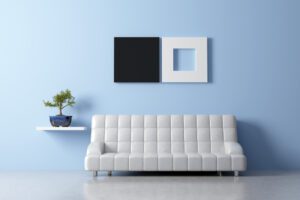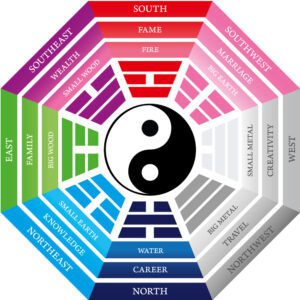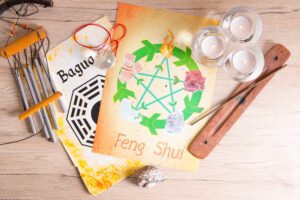There’s no denying the power that plants can have on inspiration, but sometimes plants are simply impractical or just not enough. For such cases, there is Feng Shui: the Chinese method of arranging a room in order to create harmony and peace. Everything from the color of the furniture to their orientation is considered to create a less chaotic environment.
While some may dismiss Feng Shui as frivolous or even silly, there is some logic to the practice. Removing clutter can increase productivity, and having things positioned just so can be therapeutic to some. Here are a few tips and tricks to get you started on your path to harmonic bliss.
-
CLEAN UP THE CLUTTER
As previously stated, a busy house can lead to a busy mind. Many Feng Shui guides suggest ridding yourself of everything but the  essentials and your most beloved items. If that’s a bit excessive, clean up your living space and put unneeded decorations, clothes, etc. into storage. This is the most crucial step, so be sure to grab your garbage bags.
essentials and your most beloved items. If that’s a bit excessive, clean up your living space and put unneeded decorations, clothes, etc. into storage. This is the most crucial step, so be sure to grab your garbage bags.
-
AIR AND LIGHT
Poor air quality can leave you feeling unwell, and nobody feels inspired when they’re laid up in bed. As for light, natural sunlight is best, but adequate lighting is good for the eyes and brain. Leave the shade up unless it’s nighttime or you’re changing. If you live in a house with poor ventilation or light, consider investing in an air purifier and full-spectrum light, respectively.
-
KNOW YOUR COLORS
 In Feng Shui tradition, each direction is associated with an element (wood, earth, fire, water, or metal) and a color. While the exact positions vary from house to house, knowing the basic color groups of Feng Shui is important for beginners. While areas like metal and water are fairly obvious, wood encompasses everything from light green to deep brown. Earth tones are more subdued in nature, and fire includes yellows, reds, and purples.
In Feng Shui tradition, each direction is associated with an element (wood, earth, fire, water, or metal) and a color. While the exact positions vary from house to house, knowing the basic color groups of Feng Shui is important for beginners. While areas like metal and water are fairly obvious, wood encompasses everything from light green to deep brown. Earth tones are more subdued in nature, and fire includes yellows, reds, and purples.
-
THE ELEMENTS
Once you know what colors belong to each element, it’s time to find objects in those colors belonging to the group. Pottery, for example, is a good earth item. A fireplace or candle is perfect for a fire room, and wooden furniture is necessary for the wood element. Metal and water, however, are a bit more complicated. Rocks and stones do count as metal in Feng Shui, so utilizing some in your room is an option. For water, you can use reflective surfaces or free-form shapes in lieu of an aquarium.
-
THE RIGHT DIRECTION
Once you’ve gotten the furniture and objects you want, it’s time to figure out where to put them. There are several different guides online, all with varying tips, but the main layout remains the same. As for inspiration, white and gold to the west can foster creativity. The south is the domain of fire and red and can bring fame and success. If you wish to advance your career, add black and elements of water to the north-most room.
-
DON’T OVERDO IT
A room entirely in one color is the opposite of inspiring. It’s homogeneous and can be isolating or even unnerving, depending on the hue. Using accents of the elements and colors is the way to go. Some candles here, an accent wall there- the worst thing to do is to go overboard. A little goes a long way, after all.
hue. Using accents of the elements and colors is the way to go. Some candles here, an accent wall there- the worst thing to do is to go overboard. A little goes a long way, after all.
Even if you don’t believe in the power of Feng Shui, there are still aspects of the practice that are beneficial to a healthy and organized life. If you don’t have to worry about decorating or feeling ill, you’ll have more time and energy to focus on your creative endeavors. That’s the most inspiring thing of all.







